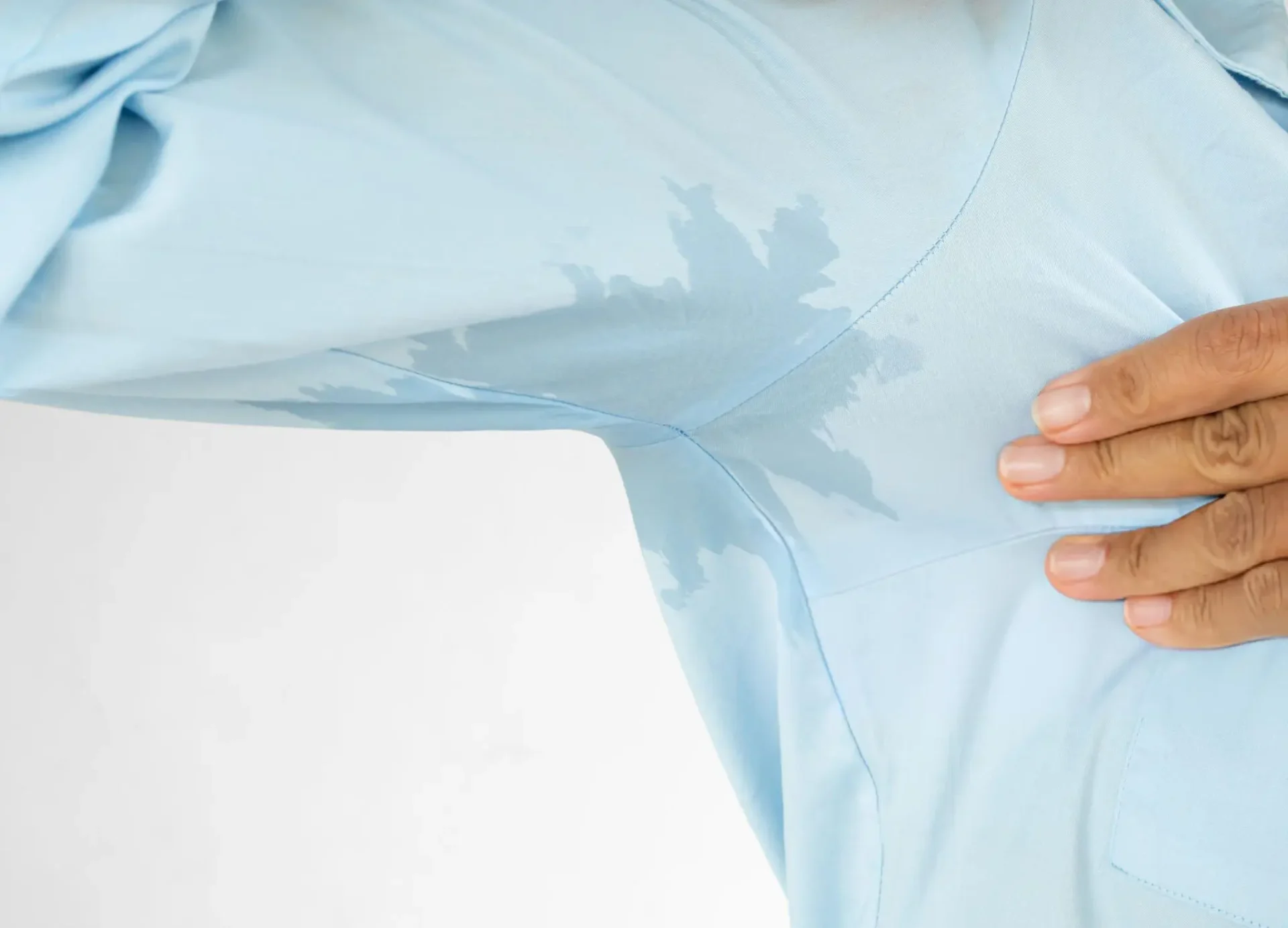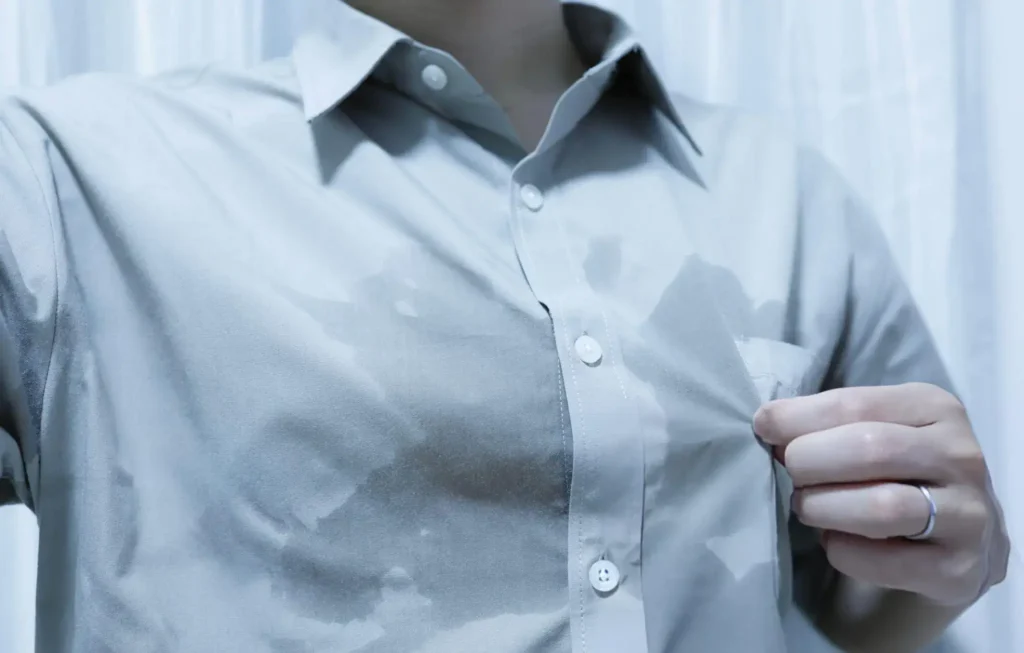Primary vs Secondary Hyperhidrosis: Key Differences Explained
If you are reading this, you have been dealing with excessive sweating that goes way beyond what’s normal. Maybe you’re sitting in an air-conditioned office in Newcastle, yet your hands are still dripping. Or you could avoid handshakes because your palms are constantly wet, even during our cooler Hunter Valley winters.
You are definitely not alone in this struggle. Thousands of Australians deal with hyperhidrosis daily, and understanding whether you have primary vs secondary hyperhidrosis can completely change your treatment approach.
What Exactly Is Hyperhidrosis?
Before we dive into the primary vs secondary hyperhidrosis debate, let’s get clear on what we’re talking about. Hyperhidrosis is not just “being a bit sweaty” – it’s a medical condition where your body produces way more sweat than needed to regulate temperature.
Think about it this way: your nervous system controls sweating to cool you down. But with hyperhydrosis, it’s like having a faulty thermostat that keeps cranking up the heat even when you don’t need it.
Most people produce about 1-3 litres of sweat daily. If you have hyperhidrosis, you might produce 4-5 times that amount of sweat in specific areas like your hands and feet, underarms, or face.
Also Read: https://skinduced.com.au/what-is-hyperhidrosis-treatment/
Primary Hyperhidrosis – When Your Body Just Sweats Too Much
Primary hyperhidrosis (also called primary focal hyperhidrosis) happens when there’s no underlying medical condition causing your excessive sweating. Your sweat glands just work overtime without any clear reason.
Here’s what makes primary hyperhidrosis unique:
It usually starts young: Most people notice it during their teens or early twenties. I have had patients tell me they remember being embarrassed about sweaty palms during Year 12 exams.
It affects specific body parts: Unlike general sweating, primary focal hyperhidrosis targets particular areas – usually your palms, feet (that’s plantar hyperhidrosis), underarms (primary axillary hyperhidrosis), or face.
It happens regardless of temperature: You could be in a cool room in Cameron Park during winter, and your hands would still be soaking wet.
It often runs in families: If your mum or dad dealt with excessive sweating, you might have inherited those overactive sweat glands.
The International Hyperhidrosis Society estimates that primary hyperhidrosis affects about 3% of Australians. That’s roughly 750,000 people across the country dealing with this condition.
Secondary Hyperhidrosis – When Something Else Triggers the Sweating
Secondary hyperhidrosis tells a different story. Here, excessive sweating happens because of another medical condition or medication you’re taking.
Unlike primary vs secondary hyperhidrosis patterns, secondary sweating usually affects your whole body, not just specific spots.
Common causes include:
- Diabetes: High blood sugar can trigger excessive sweating, especially at night
- Thyroid problems: An overactive thyroid speeds up your metabolism and cranks up sweat production
- Menopause: Hormonal changes often cause hot flashes and increased sweating
- Heart conditions: Some heart medications or the condition itself can increase sweating
- Infections: Your body sweats more when fighting off illness
- Certain medications: Antidepressants, blood pressure meds, and pain relievers can trigger sweating
Key difference: Secondary hyperhidrosis often comes with other symptoms. You might notice dry mouth, weight changes, fatigue, or other signs that point to an underlying health issue.
Many patients visiting Skinduced Aesthetics Clinic in Newcastle come to us unsure whether their sweating is primary or secondary hyperhidrosis. If you notice excessive sweating affecting your daily routine, our doctors can guide you with the right diagnosis and treatment options.
How to Tell Primary vs Secondary Hyperhidrosis Apart
Understanding primary vs secondary hyperhidrosis differences can help you figure out what’s happening with your body:
Location Matters
- Primary: Sweating stays in specific areas (palms, feet, underarms, face)
- Secondary: Usually affects your entire body or large areas
Age of Onset
- Primary: Typically starts during the teens or early twenties
- Secondary: Can begin at any age, often coinciding with other health changes
Pattern Recognition
- Primary: Consistent sweating patterns that don’t change much over time
- Secondary: May come and go, or worsen alongside other symptoms
Response to Temperature
- Primary: Sweating happens even in cool conditions
- Secondary: Often more related to body temperature, illness, or medication timing
Family History
- Primary: Often genetic – other family members may have similar issues
- Secondary: Usually not inherited, linked to personal health factors
Why Understanding Primary vs Secondary Hyperhidrosis Actually Matters
Getting the primary vs secondary hyperhidrosis diagnosis right isn’t just academic – it completely changes your treatment approach.
For primary hyperhidrosis: Treatment focuses on reducing sweating in affected areas. Options include strong antiperspirants, iontophoresis (a gentle electrical treatment), Botox injections, or oral medications.
For secondary hyperhidrosis: We need to address the underlying medical condition first. Sometimes treating diabetes, adjusting thyroid medication, or managing menopause symptoms can dramatically reduce sweating.
Knowing whether your sweating is primary or secondary is the first step to relief. At Skinduced in Newcastle, we offer confidential consultations to help you understand your condition and explore proven treatment options for hyperhidrosis.
Treatment Options Available in Newcastle
Living in the Hunter Region, you don’t need to travel to Sydney for quality hyperhidrosis treatment. Several effective options can help you manage both types of hyperhidrosis:
For Primary Focal Hyperhidrosis:
- Clinical-strength antiperspirants: Much stronger than over-the-counter options
- Botox injections: Particularly effective for primary axillary hyperhidrosis (underarm sweating)
- Oral medications: Can help reduce overall sweat production
- Iontophoresis: Great for palmar hyperhidrosis (sweaty palms) and plantar hyperhidrosis
For Secondary Hyperhidrosis:
- Managing underlying conditions: Working with your GP to optimise diabetes, thyroid, or heart condition management
- Medication adjustments: Sometimes switching medications can reduce sweating side effects
- Hormone therapy: For menopause-related sweating
The key is finding what works for your specific situation and affected area.
When Should You See a Doctor?
Here’s the truth: if excessive sweating is messing with your quality of life, it’s time to get help. I’ve seen too many patients suffer in silence for years before seeking treatment.
See a healthcare professional if:
- You’re avoiding social situations because of sweating
- You change clothes multiple times daily
- Sweating interferes with work or relationships
- You notice sudden changes in your sweating patterns
- Sweating comes with other symptoms like weight loss, rapid heartbeat, or fever
Many people in Lake Macquarie and surrounding areas assume they just have to live with excessive sweating. That’s simply not true anymore.
The Social Impact Nobody Talks About
Let’s be real about this: hyperhydrosis affects way more than just your clothes. It impacts your confidence, relationships, and career opportunities.
I’ve worked with teachers who avoid writing on whiteboards because their hands drip. Office workers who won’t shake hands with clients. Hospitality staff who feel self-conscious about sweat marks on their uniforms.
Whether you’re dealing with primary vs secondary hyperhidrosis, the social challenges feel the same. But understanding your specific type helps target treatment more effectively.
Moving Forward: Your Next Steps
If you’ve made it this far, you should recognise yourself in these descriptions. The good news? You’ve already taken the hardest step by acknowledging that excessive sweating is a real medical condition worth treating.
Here’s what I recommend:
- Keep a sweating diary for a week – note when, where, and how much you sweat
- List any other symptoms you’ve noticed
- Considering your family history, does anyone else deal with similar issues?
- Think about timing. When did your sweating problems start?
This information helps healthcare providers determine whether you’re dealing with primary vs secondary hyperhidrosis and choose the best treatment approach.
Final Thoughts
Understanding primary vs secondary hyperhidrosis is not just about medical labels – it’s about getting your life back. Whether your nervous system is just overactive (primary) or responding to another medical condition (secondary), effective treatments exist.
The worst thing you can do is nothing. Hyperhidrosis doesn’t improve on its own, but it responds well to proper treatment when you work with experienced professionals who understand the condition.
Excessive sweating should not hold you back from living comfortably. Book your consultation today with the expert team at Skinduced Aesthetics Clinic, Newcastle, and take control of hyperhidrosis with personalised treatment plans. Remember, you don’t have to sweat it alone anymore.
FAQ’s:
What’s the main difference between primary vs secondary hyperhidrosis?
The biggest difference is the cause. Primary hyperhidrosis happens without any underlying medical condition – your sweat glands just work overtime for no clear reason. Secondary hyperhidrosis occurs because of another health issue, like diabetes, thyroid problems, or medications you’re taking. Primary usually affects specific areas (hands, feet, underarms), while secondary often causes whole-body sweating.
How do I know if I have primary or secondary hyperhidrosis?
Look at when it started and where it happens. Primary hyperhidrosis typically begins in your teens or twenties and stays in the same spots consistently. Secondary hyperhidrosis can start at any age and often comes with other symptoms like weight changes, fatigue, or dry mouth. If you’re unsure, a healthcare provider can help determine which type you have.
Can primary hyperhidrosis turn into secondary hyperhidrosis?
No, primary hyperhidrosis doesn’t “turn into” secondary hyperhidrosis. They’re completely different conditions with different causes. However, you could develop secondary hyperhidrosis later in life due to a new medical condition, even if you already have primary hyperhidrosis. This would mean having both types simultaneously.
Is primary hyperhidrosis genetic?
Yes, primary hyperhidrosis often runs in families. Research shows that about 30-50% of people with primary hyperhidrosis have a family member who also deals with excessive sweating. If your parents or siblings have similar issues, you’re more likely to develop them too.
Which type of hyperhidrosis is more common?
Primary hyperhidrosis is much more common than secondary hyperhidrosis. The International Hyperhidrosis Society estimates that primary hyperhidrosis affects about 3% of the population, while secondary hyperhidrosis is relatively rare and usually develops alongside other health conditions.
Does secondary hyperhidrosis go away if I treat the underlying condition?
Often, yes! That’s one of the key benefits of properly diagnosing secondary hyperhidrosis. If your excessive sweating is caused by diabetes, thyroid issues, or certain medications, managing those conditions can significantly reduce or eliminate the sweating. This is why understanding primary vs secondary hyperhidrosis is so important for treatment success.
What areas does primary focal hyperhidrosis typically affect?
Primary focal hyperhidrosis usually targets specific areas: palms (palmar hyperhidrosis), feet (plantar hyperhidrosis), underarms (primary axillary hyperhidrosis), face, or scalp. These areas have high concentrations of sweat glands that become overactive. The affected area typically stays consistent over time.
Can you have both primary and secondary hyperhidrosis at the same time?
Yes, it’s possible to have both types simultaneously. For example, you might have primary axillary hyperhidrosis (excessive underarm sweating since your teens) and then develop secondary hyperhidrosis later due to menopause or diabetes. Each condition would require different treatment approaches.
How quickly can I expect treatment to work for primary vs secondary hyperhidrosis?
Treatment timelines vary significantly between the two types. For secondary hyperhidrosis, you might see improvement within weeks of treating the underlying condition. Primary hyperhidrosis treatments like Botox injections can show results within 2-4 weeks, while oral medications might take 4-6 weeks to reach full effectiveness. Strong antiperspirants work immediately but take time to build up effectiveness.
Are there any home remedies that work differently for primary vs secondary hyperhidrosis?
Home remedies are less effective overall, but they help more with secondary hyperhidrosis since addressing triggers (like stress or certain foods) can reduce sweating episodes. For primary hyperhidrosis, home remedies rarely provide significant relief because the condition isn’t triggered by external factors – the nervous system just produces too much sweat regardless of circumstances.
Should I see a GP or specialist for hyperhidrosis in Newcastle?
Start with your GP, especially if you suspect secondary hyperhidrosis. They can check for underlying medical conditions and adjust medications if needed. For primary hyperhidrosis or if initial treatments aren’t working, consider seeing a dermatologist or visiting specialised clinics in Newcastle that focus on hyperhidrosis treatment options.
Can lifestyle changes help with primary vs secondary hyperhidrosis?
Lifestyle changes tend to be more effective for secondary hyperhidrosis. Managing stress, avoiding trigger foods, maintaining a healthy weight, and controlling underlying conditions can all help reduce sweating. For primary hyperhidrosis, lifestyle changes might provide minor relief but won’t address the root cause since the condition isn’t lifestyle-related.
Does Medicare in Australia cover hyperhidrosis treatment?
Some treatments are covered, but it depends on the specific treatment and your situation. GP consultations and basic medical treatments are typically covered. Botox injections for hyperhidrosis may be covered in certain circumstances. It’s best to check with your healthcare provider and Medicare directly about coverage for your specific treatment plan.
What’s the success rate for treating primary vs secondary hyperhidrosis?
Secondary hyperhidrosis often has higher success rates because treating the underlying condition can eliminate the sweating. Primary hyperhidrosis treatments are very effective but may require ongoing management. For example, Botox injections for primary axillary hyperhidrosis have about 90% success rates, but treatments need to be repeated every 6-12 months to maintain results.
Can stress cause primary hyperhidrosis to get worse?
Stress doesn’t cause primary hyperhidrosis, but it can definitely make it worse. Emotional stress can trigger your nervous system to produce even more sweat than usual. This is why many people with primary hyperhidrosis notice their sweating increases during job interviews, presentations, or other stressful situations, even though stress isn’t the underlying cause of their condition.



